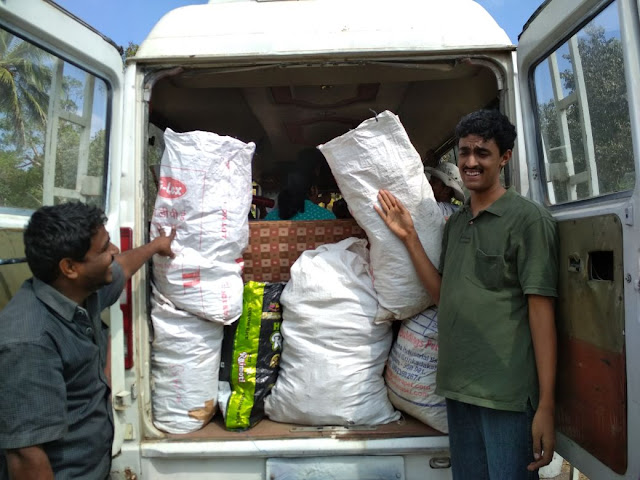The first task for the 'Find Out' group was to get out and find out ways in which we could give. We got on to our faithful minivan and went looking for people, spaces, and animals around Somanahalli that needed help. Finally, we decided that we would clean up Thottikallu (TK) Falls and help out in a local farm.
For the first four days, armed with gloves and garbage bags we set about cleaning TK Falls. The task, as we discovered, was not easy. The plastics had to be separated from the paper and the glass, visitors coming in had to be educated about littering, and discussions were needed with the lady assigned to pick up the garbage. This was clearly just the beginning!
On the last day of giving week we visited a local farm and helped in plucking out weeds from the bean patches. As we were at it, there were many interesting questions coming up from the children - 'Why are we doing this?', 'How do the weeds harm the crops?' ' How long have these beans been growing?' ' I wonder what it would be like if I had to do this work everyday?', 'Is this how much work that goes into growing all vegetables?', 'Can we throw this mud at each other for a while, please?'. And so on it went.







Comments
Post a Comment